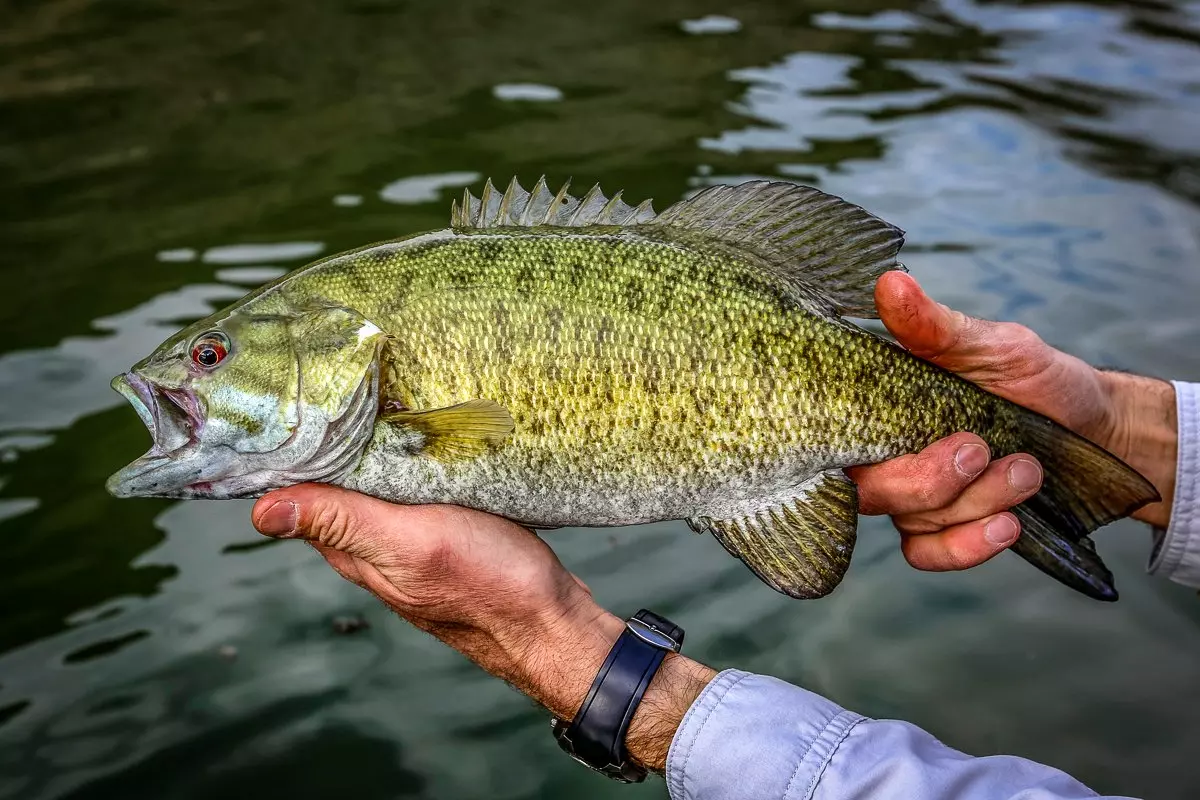The aquatic world is as diverse and vibrant as the world above the surface. Within the captivating realm of freshwater fish, two species stand out due to their popularity among anglers and their unique characteristics: Rock Bass and Smallmouth Bass.
Understanding the differences and similarities between these two species can enhance the angling experience and provide intriguing insights into their ecological roles.
Table of Contents
ToggleBiological Differences
Both Rock Bass and Smallmouth Bass belong to the sunfish family, yet they exhibit several distinctive biological traits. To fully appreciate their individual characteristics and behaviors, delving into their biology is crucial.
Rock Bass
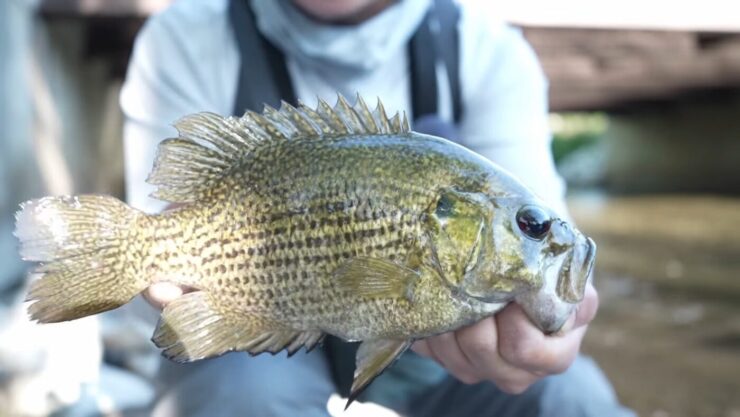
Physical Attributes
- Size: Generally smaller, usually around 6-10 inches in length.
- Coloration: Typically has a dark, olive-green hue.
- Body Shape: Compact and stout, exhibiting a more rounded body.
Lifestyle & Habitat
Rock Bass are hardy, adaptable creatures, thriving in various environments ranging from lakes to streams. They prefer hiding in sheltered spots like underwater logs and rock crevices, showcasing their resilience and versatility. They mostly feed on smaller fish and aquatic invertebrates, making them an integral part of the freshwater food web.
Smallmouth Bass: The Bronze Battler
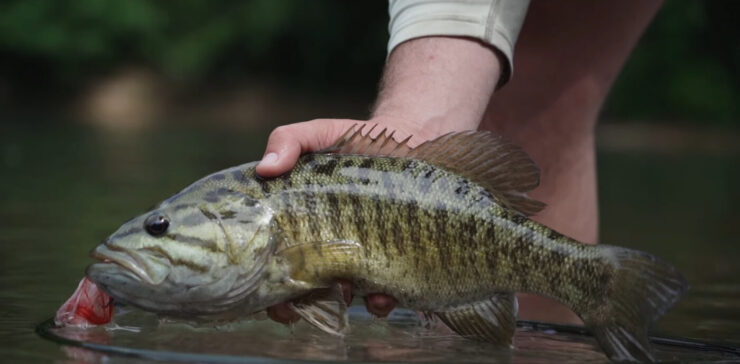
Physical Attributes
- Size: Bigger, can grow up to 27 inches.
- Coloration: Exhibits a brown, bronze, or green shade.
- Body Shape: Sleek and streamlined, allowing swift movement through water.
Lifestyle & Habitat
Preferring clearer, cleaner waters, Smallmouth Bass predominantly inhabit lakes and rivers with gravel or sandy bottoms. These fish are top predators in their ecosystems, feeding on fish, crustaceans, and aquatic insects. Their habitat preferences and dietary habits make them an essential component in maintaining ecological balance in their environments.
Behavioral Dynamics
The behaviors of Rock Bass and Smallmouth Bass are as contrasting as their physical appearances. Understanding these behavioral patterns can aid anglers in making more informed decisions while fishing and allow a glimpse into their underwater lives.
Rock Bass
Feeding Behavior
Rock Bass are opportunistic feeders, relying heavily on the element of surprise. They often stay motionless, waiting for their prey to come within reach before making their move, demonstrating their mastery in ambush predation.
Reproductive Behavior
Rock Bass exhibit fascinating reproductive behaviors. They spawn in the late spring and early summer, often in shallow, protected areas. Parental care is primarily provided by the males, who guard the nests aggressively until the offspring are ready to fend for themselves.
Smallmouth Bass
Feeding Behavior
In contrast, Smallmouth Bass are active pursuers. They cover large areas in search of prey, utilizing their speed and agility. This predatory style requires higher energy expenditure but allows them to exploit diverse food sources, making them efficient hunters in their ecosystems.
Reproductive Behavior
Similar to Rock Bass, Smallmouth Bass spawn in late spring or early summer, with males taking on the majority of parental responsibilities. They prefer spawning in gravelly or sandy substrates and exhibit remarkable diligence in protecting their offspring from potential threats.
Angling Techniques
For anglers, distinguishing between Rock Bass and Smallmouth Bass is fundamental. Deploying the right techniques, baits, and lures can significantly improve the chances of a successful catch. Both species, though sharing some preferences, demand distinct approaches due to their unique behaviors and habitats.
Rock Bass
- Light Tackle: Since Rock Bass are smaller, using light tackle can be more effective.
- Small Baits: Miniature baits resembling their natural prey are usually more appealing to them.
Preferred Baits & Lures
Rock Bass are usually not picky eaters. They are attracted to live baits such as worms and small minnows, and they also respond well to small jigs and spinners. Selecting the right bait or lure can turn the angling experience into an exciting endeavor filled with bountiful catches.
Smallmouth Bass

- Medium to Heavy Tackle: Suitable for handling the larger, more powerful Smallmouth Bass.
- Varied Retrieval Speeds: Altering retrieval speeds can entice more strikes from these agile predators.
Preferred Baits & Lures
Smallmouth Bass exhibit preferences for larger, more dynamic lures like crankbaits and spinnerbaits. They are also known to strike at live baits, such as crayfish and large minnows. Employing the correct lure or bait according to their preference can significantly heighten the chances of landing a memorable catch.
Ecological Importance
Both Rock Bass and Smallmouth Bass play pivotal roles in their respective ecosystems. Their interactions with their environment and other species can have cascading effects on the ecological dynamics of the habitats they occupy, influencing biodiversity and resource availability.
Rock Bass
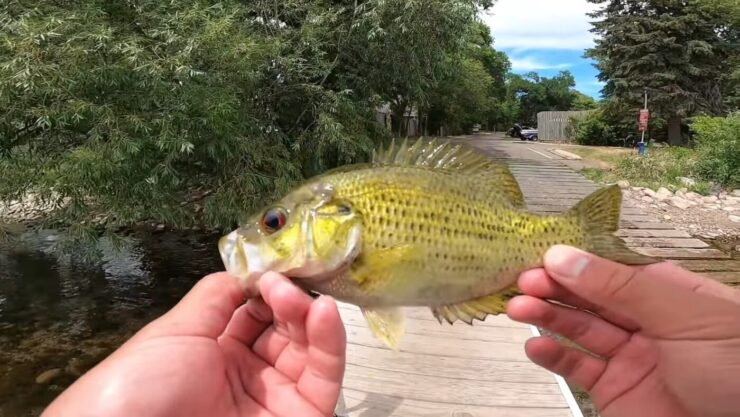
Role in Ecosystem
Rock Bass serves as both predator and prey, maintaining equilibrium in the food web. By consuming smaller fish and invertebrates, they help control their populations, ensuring resource balance and biodiversity within their habitats.
Impact on Environment
Their preference for diverse habitats means they often contribute to the overall health and functioning of various aquatic ecosystems. By residing in different water bodies, they facilitate nutrient cycling and energy flow, essential processes for sustaining life in aquatic environments.
Smallmouth Bass
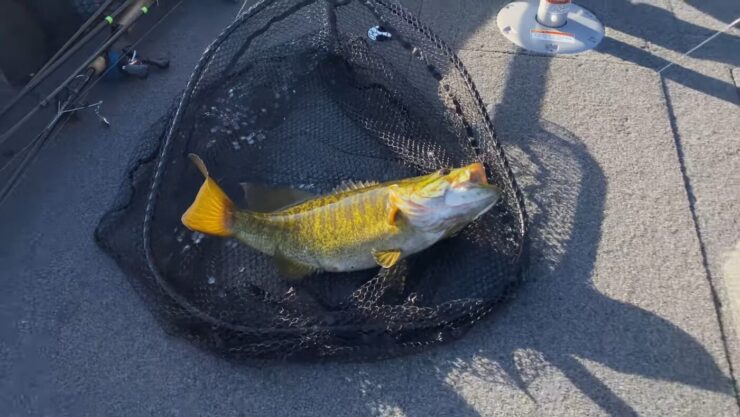
Role in Ecosystem
Smallmouth Bass, being at the top of the food chain in their ecosystems, regulate the populations of their prey species, preventing overpopulation and promoting ecological stability and diversity. Their predatory behavior impacts the distribution and abundance of other species, shaping the community structure in their habitats.
Impact on Environment
Due to their preference for cleaner waters, the presence of Smallmouth Bass can often be an indicator of good water quality and a healthy environment. They contribute to ecological resilience by promoting a balanced, diverse ecosystem, crucial for the well-being of all species within their habitat.
Conservation Concerns and Management
Conservation and sustainable management of both Rock and Smallmouth Bass are crucial to preserving biodiversity and maintaining ecological balance in freshwater ecosystems. Addressing the challenges faced by these species requires understanding their needs and implementing effective conservation strategies.
Rock Bass
Conservation Status
Rock Bass are generally not considered endangered, but local populations can suffer due to habitat degradation, pollution, and overfishing. Monitoring and managing their populations are essential to avoid any unforeseen declines.
Management Strategies
- Establishing protected areas to safeguard their habitats.
- Implementing fishing regulations to prevent overexploitation.
- Promoting public awareness and education about the importance of Rock Bass and their role in the ecosystem.
Smallmouth Bass
Conservation Status
While Smallmouth Bass are relatively abundant, they are susceptible to habitat loss, water pollution, and climate change. Protecting their habitats and maintaining water quality is paramount for their survival. Management Strategies
- Regularly monitoring population trends and water quality in their habitats.
- Enforcing strict pollution control measures to preserve their preferred water conditions.
- Developing and implementing adaptive management plans to mitigate the impacts of environmental changes on Smallmouth Bass populations.
Can Rock Bass and Smallmouth Bass coexist in the same habitat?
Yes, they can coexist in the same habitat. They often inhabit the same water bodies but may have different microhabitat preferences within those bodies, which helps minimize competition between the two species.
Do Rock Bass and Smallmouth Bass have similar lifespans?
Not necessarily. Smallmouth Bass generally have a longer lifespan and can live up to 15 years or more under optimal conditions, whereas Rock Bass typically have shorter lifespans, living up to around 10 years.
Can Rock Bass and Smallmouth Bass hybridize?
There are no documented cases of Rock Bass and Smallmouth Bass hybridizing. Although they belong to the same family, they are different species with distinct biological characteristics, making natural hybridization unlikely.
Are there any specific diseases that are common to Rock Bass and Smallmouth Bass?
Both species can be susceptible to similar aquatic diseases, such as Largemouth Bass Virus and various parasitic infections, but the prevalence and impact of these diseases can vary depending on environmental conditions, population density, and stress levels.
Which one is more popular among recreational anglers, Rock Bass or Smallmouth Bass?
A: Smallmouth Bass are generally more popular among recreational anglers due to their larger size and the fighting spirit they exhibit when hooked, providing a more exciting and challenging experience. However, Rock Bass are also targeted for their ease of catch and abundance.
Do Rock Bass and Smallmouth Bass exhibit any form of territorial behavior?
Yes, especially during the spawning season, both Rock Bass and Smallmouth Bass males exhibit territorial behaviors. They aggressively defend their nesting sites from intruders and potential threats to protect their eggs and offspring.
Final Words
The charming world beneath the water surfaces houses a myriad of species, each possessing its own set of unique characteristics and behaviors. Rock Bass and Smallmouth Bass, though hailing from the same family, present stark differences in their biology, behavior, and preferred habitats.
Whether you are an avid angler, a curious observer, or someone with a penchant for the mysteries of the aquatic realm, unraveling the tales of these underwater titans can be a fascinating journey.
Related Posts:
- Heavy Duty Fishing: 11 Best Rods And Reels For Big Fish 2025
- Difference Between Buffalo Fish And Carp - Which One…
- 10 Best Saltwater Fishing Boats - Ultimate Angling Adventure
- 12 Best Fishing Lures Ever 2025 - Baits That…
- 16 Best Kayak For Beginners 2025 - Kayaking Adventure Gear
- 10 Best Inflatable Kayak 2025 - Rivers, Lakes & Open Seas

